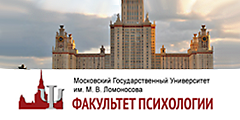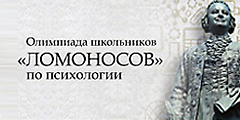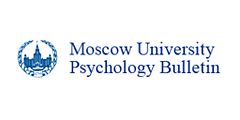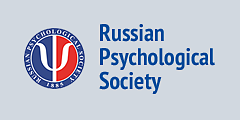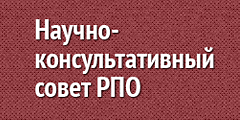
-
The Features of Modeling Mediation in Digital Support for Formation of Multiplicative Concepts
-
Background. The formation of multiplicative concepts of complex structure is a challenge for educational design. Students’ typical mistakes and strategies spontaneously obtained through hands-on trials in solving balance scale problems have been at the center of many studies within this trend. However, the consideration of relevant concept-mediated actions based on Learning Activity Theory (Davydov) remains a relevant problem.
Objective. We aimed to develop a feasible framework for digital support of students’ learning actions in this domain. The productiveness of individual and joint forms of work with dynamic objects in a digital environment, mediated with conceptual modeling tools, was compared.
Design. The participants were 181 fifth-grade students (11–12 years old). The first group (123 students) was taught a special procedure of modeling, which they then could test during individual computer-supported problem-solving. The second group (58 students) worked in pairs (jointly), using the same procedure. The pre- and post-tests included challenging problems on prediction of the balance state and ways to regain equilibrium.
Results. Comparison of the pre- and post-test results of the joint computer-supported activity instruction revealed students’ progress in solving critical tasks as guided by the conceptual modeling procedure of load evaluation instead of “empirical” correlations of weights and distances. The individual computer-supported work, however, failed to overcome the belief of some students in the efficacy of trial-and-error methods as applied to the digital simulation with instant feedback.
Conclusion. The special organization of the computer-supported concept-mediated joint activity may promote multiplicative concept formation.
DOI: 10.11621/pir.2024.0207
Keywords: multiplicative concepts/ balance scale problem/ joint activity/ concept formation/ computer supported learning
-
-
“Interstellar Wanderers:” Digital Support for Teaching Place Value Within the Activity Approach Framework
-
Background. The majority of mistakes students make while using “well-learned” decimal counting, can be attributed to their miscomprehension of the structure and arrangement of the “positional” numeral system. Digital support may merely serve an illustrative and training function, or it may provide the special environment for locating the problem of positional counting as a part of meaningful actions by the students. Following the Activity approach, we aimed to scaffold the students’ own learning actions, in such a way as to reveal the origin of the multi-digit number concept. Thus, we used counting in other-base systems as a way for students to reconsider the reasoning behind familiar operations in the most common base-ten system.
Objective. The purpose of this paper is to present the approach to computer support which we have designed, based on our analysis of the activity content related to the multi-digit number concept, and to discuss some preliminary results of the first training series.
Design. The approach to educational environment design developed within the Learning Activity theory defines the ways in which a computer becomes essential. The computer should provide a transparent interface which allows students to perform transformations with objects which will react accordingly. The additional opportunities to perform concept-mediated orientation procedures should also be scaffolded by digital means. For the purposes of our study, the computer-based educational module “Interstellar wanderers” was designed. Four groups of students from 2nd to 5th grade (8-12 years of age, 20 children in total) participated in the experimental computer-based lessons (over 30 hours); classroom observations, videotaped discussions, and logs of students’ individual work in the computer simulation were used for analysis.
Results. The preliminary results of the experimental teaching showed that the computer support which we developed may scaffold students’ progress toward acquisition of the multi-digit number concept through a reflective re-thinking of the well-learned decimal system. Yet further research is needed to get a quantitative analysis of students’ performance.
Conclusion. The general principles of computer support design based on the Activity approach in education (Galperin, Davydov, & Talyzina) demand a thorough analysis of the origin of the concept being studied, as well as the design of appropriate content and means of students’ actions and corresponding contexts and tasks. The digital means which we designed to support students’ learning activity, are in demand and bring promising results.
DOI: 10.11621/pir.2023.0402
Keywords: concept acquisition/ orientation procedures/ computer support/ positional counting/ multi-digit number/ place value
-
-
The “Moon Test”: A Step Towards Evaluating Comprehension of Educational Text through Model Mediation
-
Background. This paper addresses the issue of educational text comprehension, which is one of the major problems in secondary schools, especially when such texts are introduced in the natural sciences. Studies on text comprehension often regard reading as a standalone skill: its mechanisms are discussed from leading theoretical approaches (cognitivism, constructivism, etc.), and variables are distinguished and evaluated. Most of the researchers consider text comprehension to be active reconstruction of the meaning which the text delivers, and regard the application of the information retrieved from the text to problem-solving as the indicator for a deep comprehension level. Since we work within the framework of Cultural-Historical Activity Theory (CHAT), we consider educational text comprehension to be mediated through special content-related models which students have to acquire. Unfortunately, there are no studies which have directly linked reading, corresponding problem-solving, and working with content-related models (symbolic means, schemes); hence, with this research, we are seeking to fill in the gap.
Objective. Our goal is to elaborate the perspective on educational text comprehension as mediated through mastering special modeling (symbolic) means. In this article we illustrate this approach with the “Moon test” – an assessment procedure which we designed to materialize the components of orientation of students’ action as they succeed or fail to solve problems by relying on the educational text provided.
Design. We conducted the “Moon test” among the fifth graders (10-12 years old). The text, which told the students how to use the moon’s visual transformations as a calendar, was followed by 12 tasks on the topic. The tasks required using the text to master the model provided, and then solve challenging tasks which only referred to the model implicitly.
Results. To analyze the results, we grouped the tasks in four blocks: 1) model acquisition; 2) mastering; 3) application; and 4) experience. The results showed a statistically significant decrease in the students’ performance on tasks of the third and the fourth blocks, which required reasonable application of the models. Further analysis of individual patterns of performance allowed us to distinguish clusters of students with different levels of success in each block.
Conclusion. Our results attest to the importance of model mediation for reading comprehension and the development of scientific literacy.
DOI: 10.11621/pir.2021.0408
Keywords: Scientific literacy/ assessment/ reading comprehension/ model acquisition and application/ transfer from primary to secondary education
-
-
How Do Primary Schoolchildren Use Concept Definitions in Recognition Tasks? Orientation Towards Given Knowledge in Two Different Educational SystemsPDF HTML4987“ CITE
Sidneva, A.N., Vysotskaya, E.V., Korotaeva, I.V., Mozharovsky, I.L., Shinelis, V.A. (2020) How Do Primary Schoolchildren Use Concept Definitions in Recognition Tasks? Orientation Towards Given Knowledge in Two Different Educational Systems. Psychology in Russia: State of the Art, 13(2), 29-64.
copied
-
Introduction. The need to develop students’ ability to learn independently has been a widely discussed issue in the theory and practice of education over the past 50 years (in research on learning to learn, self-regulated learning, metacognitive learning, etc.). If we understand instruction as a system of activities by the student and teacher, associated primarily with the transmission of cultural experience, then studying the psychological mechanism for accepting and using the proffered knowledge as an orientation for future actions is highly relevant.
Objective. We surmised that the ability to use given knowledge in the school instruction process (which we call “orientation towards given knowledge” [OGK]) would differ between fourth-graders studying in traditional educational systems (TE) and those in Developmental Education (DE), since these systems differ significantly in the principles of the selection learning material and organization of learning activity. We also sought to clarify the correlation between OGK and such important educational outcomes as the ability to identify the most important thing in a text, logical skills, memorization skills, and academic achievement.
Design. To diagnose OGK, we gave fourth-graders (N = 115) the definition of a concept, an instruction to recognize and identify objects as either being described or not described by that concept, and 10 recognition problems in the form of short texts. We assessed the level of OGK by counting the number of problems for which the answer was justified by the given definition. In addition, we measured the ability to identify the main point in the text, logical skills, and random memorization skills.
Results. Almost a quarter of all the fourth-graders (25.7%) failed to use the given definition at all; however, the DE students demonstrated a higher level of OGK (U = 2038, p < .01) significantly more often. OGK among general sample also correlated with the ability to identify the most important thing in a text (R = 0.31, p < .001), logical skills (R = +0.35, p < .001), and memorization skills (R = +0.195, p < .05 for short-term memory and R = +0.301, p < .01 for long-term memory).
Conclusions. Possible reasons for the cognitive performance of the fourth-graders are discussed. We argue that orientation towards given knowledge can be considered an essential condition for effective learning, and therefore serious attention should be paid to its development.
DOI: 10.11621/pir.2020.0203
Keywords: Activity approach, Developmental Education, action, recognition action, orientation towards given knowledge.
-
-
The Action “Wanted!”: The Concept of Valency during the Early Steps of Mastering Chemistry
-
Background. We apply the theory of step-by-step concept formation (Galperin) and the theory of learning activity (Davydov) to the practice of education and teacher training.
Objective. This paper describes a feasible way to teach the basics of Galperin’s theory to students studying pedagogical psychology, by involving them into an exemplary educational module on combining chemical formulas according to the elements’ valency values.
Design. We suggested that our students participate in an educational module which was designed as an example of how to materialize orientation components of action as the basis of concept formation. The “practical” action for mastering the valency concept was to combine the correct formula for a pair of elements, whose valency was provided, and correct the formulas made by someone else. However, the core “orientation” required an extended procedure of building a “molecule” structure with a special construction kit. The key challenge for the students was to coordinate their calculation of the number of bonds needed for the molecule, and name the exact total before they would receive their atom-tokens for constructing the model.
Results. Our workshop participants took on the role of students facing their first encounter with chemistry, and embarked on the formation sequence. At the same time they analyzed the mistakes they had made by ignoring some procedural steps. Considered through the lens of Galperin’s theory, these “adult” mistakes proved how vital his theoretical principles are for educational design.
Conclusion. Our workshop thus illustrated that the search for the proper action for concept formation within Galperin’s theory framework is a challenging task. The difficulties that our participants experienced while they worked as pupils revealed the divergence of didactic approaches. The effectiveness of the concept formation approach, even within our small exemplary educational module, once again confirmed the practical value of pedagogical psychology in general, and Galperin’s theory in particular.
DOI: 10.11621/pir.2022.0404
Keywords: step-by-step concept formation/ Activity approach/ materialized form of action/ interiorization/ orientation
-



